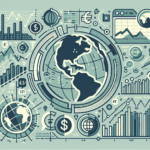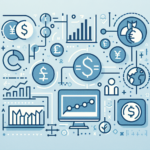
China’s Economic Revolution: Boosting Growth Through Domestic Consumption
Tháng 4 7, 2025
Billionaire Leon Cooperman’s Caution: Navigating Market Turbulence and Investment Strategies
Tháng 4 7, 2025Deutsche Bank Raises Gold Price Forecasts: A Reflection of Economic and Geopolitical Landscape
Deutsche Bank has recently made headlines by elevating its forecasts for gold prices in the upcoming years, highlighting the metal’s increasing status as a safe-haven asset in uncertain times. The new projections set an average gold price of $3,139 per ounce for 2025 and $3,700 per ounce for 2026, a notable increase from earlier estimates of $2,725 for 2025 and $2,900 for 2026. These adjustments underscore how economic instability and geopolitical tensions are reshaping market perceptions of gold’s value.
Drivers Behind Increased Gold Price Forecasts
The lifting of price predictions is primarily driven by the continuing allure of gold as a hedge against various economic instabilities and geopolitical conflicts. Over the course of this year, gold has ascended approximately 15%, reflecting robust investor demand despite some recent price corrections. This surge is indicative of a broader market sentiment favoring gold amid ongoing uncertainties in both domestic and international arenas.
Moreover, soaring inflation rates and fluctuating currency values, particularly those linked to the US dollar, enhance gold’s appeal. Investors often turn to gold during periods of economic hardship, hoping to preserve their wealth against inflation and currency devaluation. Deutsche Bank’s analysts are keenly aware of these dynamics, noting that other financial institutions, including HSBC and Bank of America, share similar optimistic projections for gold in the face of sustained geopolitical risks.
Central Bank Demand and Global Strategies
Adding another layer to the bullish outlook for gold is the significant increase in gold holdings by central banks worldwide. In the last year, these institutions have escalated their gold acquisitions, boosting their share of gold in market portfolios from 10% to 24%. This remarkable growth illustrates a strategic pivot aimed at fortifying reserves in light of geopolitical instability and economic volatility.
In particular, attention has turned to a pivotal pilot program involving leading Chinese insurance companies. This initiative is poised to inject additional demand into the market, with experts estimating a potential boost of up to $120 per ounce to gold prices. This influence, combined with prevailing global factors such as anticipated US interest rate cuts, further cements the narrative that gold is an indispensable asset in the current environment. This broad demand for gold is echoed in discussions surrounding international trade tensions and economic stability, similar to points raised in this analysis of strategic moves by China’s President Xi Jinping.
Conclusion: The Future of Gold
The gold market is currently riding the waves of evolving economic and geopolitical landscapes, revealing an intricate tapestry of factors influencing pricing and demand. The upward revisions by Deutsche Bank serve not only as a financial forecast but as a keen observation of tendencies shaping global economies. As central banks intensify their gold purchases and initiatives like China’s insurance sector pilot emerge, one thing becomes clear: the allure of gold, celebrated for centuries as a store of value, is likely to endure as uncertainties rise.
Investors and stakeholders in the gold market should remain vigilant and informed, recognizing that as geopolitical and economic conditions continue to unfold, gold’s role as a safe haven is poised to remain prominent, solidifying its reputation as an asset of necessity in turbulent times.

